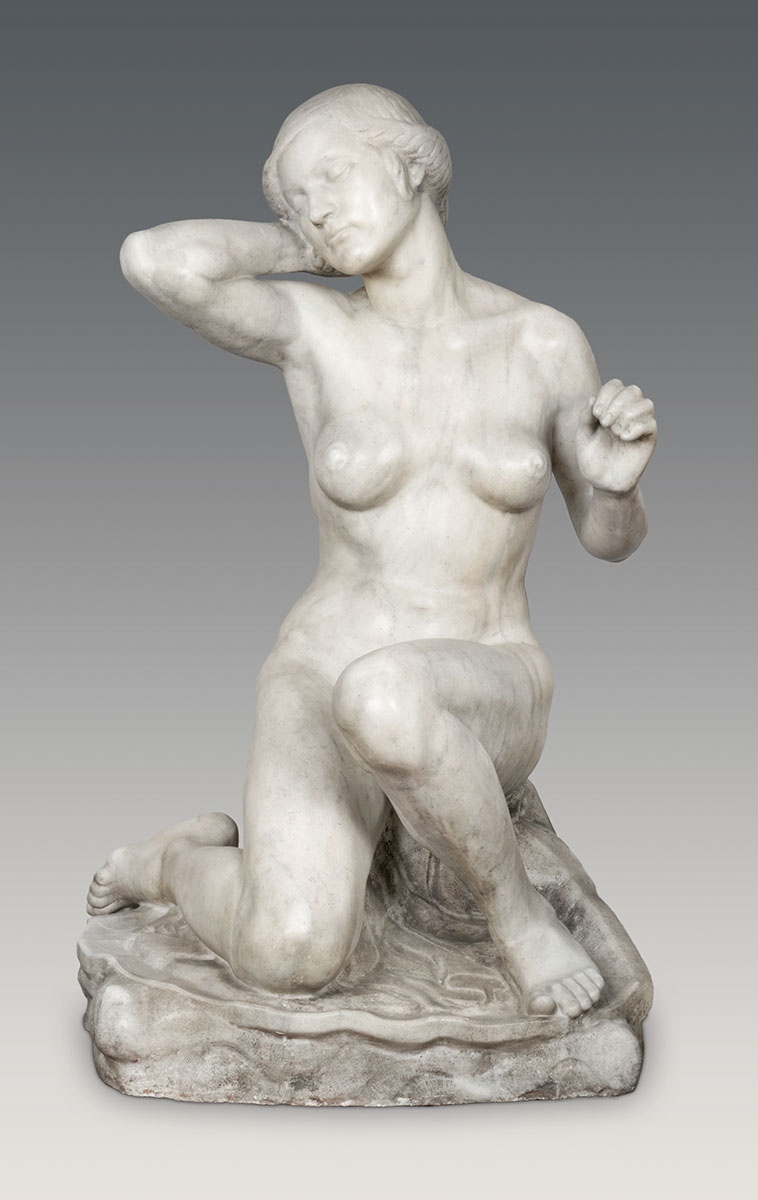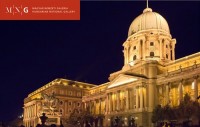Venus Anadyomene is an iconographic type of “Aphrodite rising (from the sea)”, originating in antiquity. The birth of the goddess is recounted by Hesiod, according to whom Aphrodite arrived from the white waves of the sea. In accordance with later tradition, she stepped out of the seashell in which she was born.Ödön Moiret did away with the representation customary since Botticelli, in which the goddess appears in the seashell as a triumphant, standing figure; his Aphrodite has just awoken, is stretching out, as if indeed in the moment of birth. The composition itself is quite unusual: there are hardly any more examples of a sitting Venus. Moiret may have taken another antique iconographic type of the goddess of love for his model, the so-called Crouching Aphrodite, considered by some to be another representation of the birth of Venus. What is certain is that the Crouching Aphrodite of Rhodes did serve as an inspiration for another statue by Moiret, the 1919 Resurrection (Reflection). In the light of this, it is fair to assume that his Venus is also related to this iconographic type.
en

